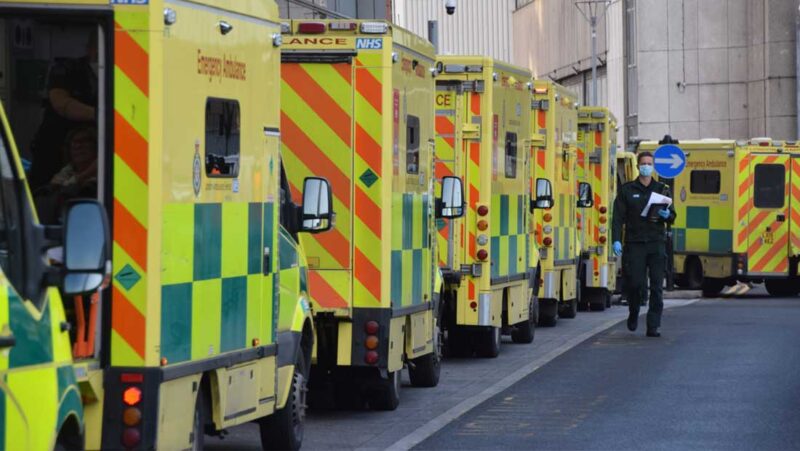The Electronic Prescribing Medicines Administration (ePMA) system is the colourful electronic drug chart introduced in order to meet NHS standards, improve healthcare systems, and to eliminate errors that arose with the use of handwritten drug charts. But does it?
Changing from a paper-driven system requires a new mindset. STAT doses, VTE prophylaxis, oxygen requirements, PRN medications and regular medications all once formed obligatory sections on drug chart for ease of prescribing. But they also acted as prompts for prescribers and pharmacists. Without the physical guidance of an intended drug card, compulsory medication safeguards have now been removed.
Does the ePMA system introduce or increase a level of clinical risk that was once addressed by a drug chart? Does the system fit our modern and integrated style of multidisciplinary working within the NHS? This article highlights some of the issues which my team and I faced daily as hospital pharmacists at ward level following the implementation of the ePMA system within a busy Trust.
Largely speaking, the pharmacist clinically safeguards doctors’ prescribing. In order to attempt to replicate this process in the system, several mechanisms have been set up for the pharmacist to create a safeguard. However, this is often missed as the feature is not clearly visible within the system. Where once a pharmacist would raise a clinical issue against an item on a drug chart for the attention of the prescribers or nursing staff, this is now a series of click-heavy mechanisms to enable communication to the prescriber, who may or may not notice the little sticky note which highlights an intervention. There may be several of these notes over the ‘current PMR’ which, on a busy day, are likely to be overlooked.
New patients presenting to NHS inpatient wards are reviewed by the pharmacy team to reconcile medicines to ensure a seamless continuation of care of ongoing co-morbidities and to prevent errors during their stay and subsequent discharge. However, the edition of the ePMA system used by my team has no available features for documenting such a process. Our focused pharmacy team developed a series of steps in order to create a method for medicines reconciliation, an essential task for pharmacy to help prescribers write an accurate drug chart. However, the method contains limited characters and cannot be corrected or added to once saved, causing endless tasks appearing.
Medications that are stopped fall off the list and do not show as stopped unless a game of ‘spot the historical medication’ is played.
This equates to a lot of click-happy mechanisms as part of the medicines reconciliation process, extending the time taken to complete this task. Once the list eventually disappears after 14 days, the process to check a discharge medication list against the pre-admission list is gruelling, involving multiple screen switching. In addition, the current PMR observed by the prescriber is not the same as that observed by the pharmacy team. What constitutes an orderly PMR for the prescribers with separate PRN and STAT doses is entirely dumped onto the pharmacist screen for PMR, without order or chronological sequence of any sort. Medications that are ‘stopped’ fall off the list for pharmacists and do not show as stopped unless the particular ‘History PMR’ tab is selected and a game of ‘spot the historical medication’ is played.
It is essential that a pharmacist can communicate required actions relating to medicine discrepancies and interventions with a prescriber. However, it is not always appropriate to communicate verbally: the medical teams are routinely busy on their ward rounds or simply unavailable on the ward at the time of intervening. Leaving verbal messages or communications via pagers may not address the problems that need further discussion. Writing in medical notes, although not perfect, was a more reliable way of documenting a task that needed to be done. And yet we have now created a tiered system whereby the pharmacy team have now tripled their workload. To document an intervention is no longer a simple task and has in fact opened a Pandora’s Box of endless tasks that may or may not get actioned, with additional notes left daily for another pharmacy team member to chase.
Traditionally, the discharge note is written by the doctor who oversees the care of the patient. Unfortunately, with long working hours and rota changes, many doctors in charge of patients’ care may not be those who write the discharges. Pharmacists play a crucial role in ensuring the information on the discharge note regarding new, old or changed medications are evaluated and communicated. The new process proposed by ePMA reduces the autonomy a pharmacist has over discharge medications. In fact, they are unable to make open comments about medication, relying solely on the prescriber to get this right.
We are facing a significant change in the way we work at ward level. Replicating processes which have been embedded within the NHS for several years is a big ask of an electronic system. But easy processes have become more complex, prolonging individual tasks and duplicating work. The ePMA system was designed to enable electronic prescribing, document administration, store historical data episodes and introduce safeguards for different users. It has the potential to do this if the right functions are available and used correctly, and if it allows safe and effective work streams. When technical aspects are addressed, the system could be superior to a paper based chart.




